Introduction
Carenado originally released the Cessna Model 210
‘Centurion II’ as part of their extensive Cessna range for
FS2004. Now released
as part of the Carenado HD Series for FSX, the upgraded Cessna
Model T210M ‘Centurion II’ is replete with the features and
quality synonymous with Carenado models.
History
The Cessna Model 210 ‘Centurion’ is a six seat, high
performance, retractable gear, single engine, general aviation
aircraft. It was
developed from the popular Cessna Model 182 ‘Skylane’ by adding
the retractable landing gear, a swept tail and a new wing
design. First flown
in January 1957, the Model 210 was produced from 1957 to 1986,
with approximately 9,200 built across 17 model variants.
During it’s production life, it was the top of the Cessna
single engine model line-up.
Many improvements were made over the course of
production, primarily, more powerful engines, increased take-off
weight, the introduction of a turbocharged engine option from
1966, various airframe improvements and, most notably, the
introduction of a pressurised variant, the P210N, in 1978.
Availability and Installation
There are two models provided (one pilot and two
pilots) and five HD paint schemes with the same schemes also
provided in ‘Lite’ versions for low performance computers. There
is also a HD blank texture provided for aircraft painting
enthusiasts.
Documents
There are seven manuals / documents provided in
Adobe Acrobat format (.pdf):
| •
Normal and Emergency Procedures, and Performance Tables
– this 32 page manual provides the Procedures and
Performance Tables for the operation of the aircraft and is also provided as a ‘panel window’ in the aircraft; • Reference Table – this single page document details all operating reference speeds and is also provided on the ‘Kneeboard’ in the aircraft; • Carenado GNS 530 Users Guide – this two page document details the operation of the Garmin GNS 530 GPS unit; • Carenado GNS 430 Users Guide – this three page document details the operation of the Garmin GNS 430 GPS unit; • Autopilot KFC225 Manual – this three page document details the operation of the Bendix/King KFC225 Autopilot unit; • Operations Tips and Reality XP Integration – this single page document provides instructions for the integration of the Reality XP instruments and other operations tips; and • Recommended Settings – this two page document details recommended settings for Display and Realism for Carenado aircraft. |
Model Features
The model features listed by Carenado for the T210M
‘Centurion II’ is typical of models in the Carenado range and
includes:
·
HD quality textures (2048 x 2048);
·
3D gauges;
·
Instrument reflections;
·
Reality XP integration with 3D gauges;
·
Carenado Garmin GNS 530 and GNS 430 GPS units;
·
KFC225 autopilot;
·
Original HQ digital stereo sounds recorded directly
from the real aircraft;
·
Realistic flight dynamics and weight and balance;
and
·
Tested by real world Cessna T210 pilots during
various phases of flight, such as: take-off, climb, cruise,
descend, approach, landing and
specific manoeuvres.
Other visual features and the texture mapping effects introduced in FSX Service Pack 2 are also included.
Paint Schemes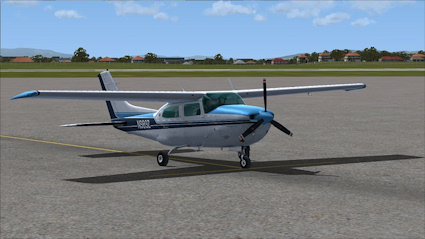 |
 |
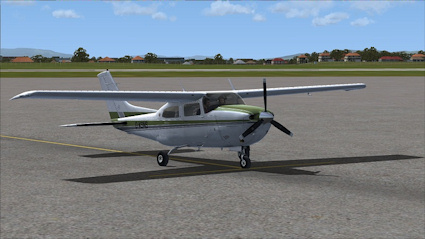 |
 |
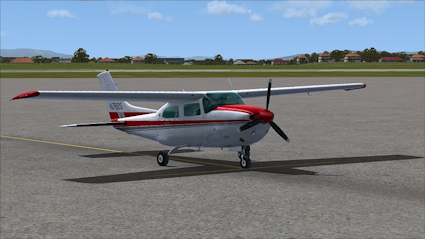 |
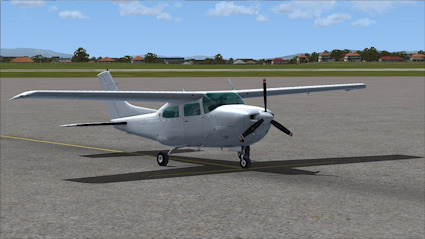 |
General Visual Appearance
-s.jpg) |
-s.jpg) |
 |
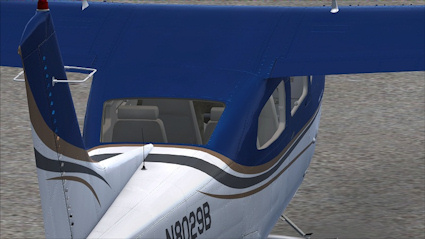 |
Interior
All primary flight instruments are on the
left side
(pilot side) with only engine management instrumentation on the
right side of the panel.
The radio, GPS, autopilot and throttle and trim controls
are all located centrally.
The four primary flight instruments are laid out in the
standard “T” arrangement with the turn coordinator and vertical
speed indicator forming the common “six pack” layout.
All the flight instruments are clear and easy to read
and both yokes can be removed to provide an unobstructed view,
particularly of the ignition and light switches located on the
lower panel.
The
Carenado Garmin GNS 530 and GNS 430 GPS units are more versatile
and provide far more functionality than the standard FSX Garmin
295 and 500 GPS units.
They are also used to change both radio and VOR/DME
NAVAID frequencies. The
GNS 530 unit is also available as a panel window.
The KFC225 Autopilot unit functions differently to the
FSX standard Bendix/King units and deserves some brief attention
to the manual to ensure correct operation.
Various alternative cockpit camera views are available to
provide more detailed views of the instruments.
The panel dashboard has a textured finish closely
resembling that of textured vinyl and the panel background
displays some paint chips to give it a less than pristine
appearance.
 |
-s.jpg) |
-s.jpg) |
-s.jpg) |
Cockpit Layout
The cockpit layout of the T210M follows the standard six seat
arrangement for the model.
Both door and window levers open and close these features
respectively. Again,
the detail in the textures of the leather seating and floor
carpet provide an extremely realistic appearance, including the
seam stitching and creasing in the seats.
In one of the alternative cockpit camera views, the dome
light can be activated by the switch on the dome light assembly.
The dome lighting effect is visible in all other views.
The attention to detail on the interior is, again,
of an extremely high quality.
This detail even includes various minor switches and
systems, such as the cabin air levers on the panel and the
oxygen lever on the overhead console that operate to provide a
more realistic feel to the layout.
I did find the following minor issues that detract from
such a high quality rendition:
· The “flight time” display on the transponder unit
initially displays a standard hh:mm:ss type format, however,
after the first hour, it displays the hour then total minutes in
the minutes display.
For example, instead of 02:44:38, it displays 02:164:38.
· There is a time variance between elapsed time on the
clock and the transponder “flight time” display and that
recorded on Hobbs Meter and the engine hours on the RPM gauge
record time.
· Problem of visual perspective in relation to the
vertical stabiliser.
In my opinion, when viewed from an off centre position, the
angle appears exaggerated for the position it is viewed from.
However, it does improve when the view position is
adjusted.
Animations and Static Elements
Animations and static elements include:
•
Primary control surfaces – ailerons, elevators and rudder;
•
Secondary control surfaces – flaps;
•
Others – retractable gear, elevator trim tab, rolling wheels, pilot and passenger door open / close, luggage compartment door open / close,
windows open / close, vibrating antenna and exhaust;
•
Pilot’s head turning; and
•
Wheel chocks, pitot covers, engine air inlet covers, and safety cones.
One disappointing aspect of the animations was the
lack of changing propeller pitch, even though this feature has
been modelled on previous Carenado Cessna aircraft.
-s.jpg)
-s.jpg)

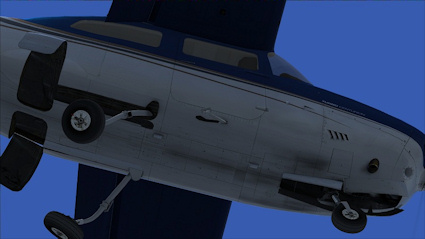
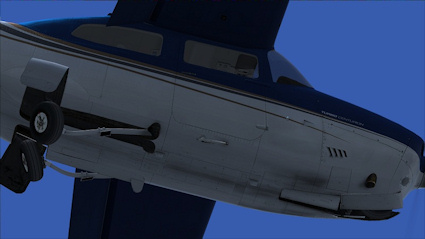
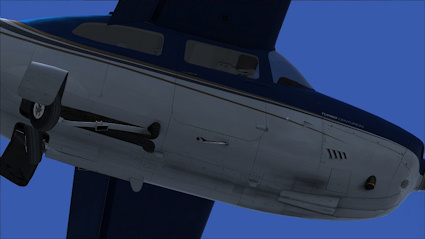
-s.jpg)
-s.jpg)
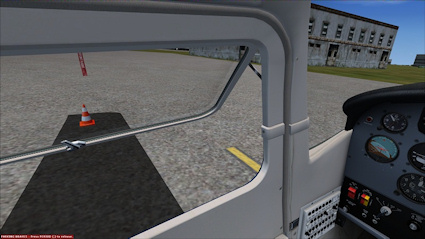
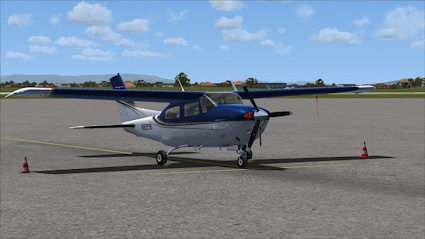
Lighting
-s.jpg)
-s.jpg)
-s.jpg)
-s.jpg)
Sounds
Of course, there
are the usual sounds associated with the
doors opening and closing, however, no discernible sound
associated with the opening and closing of the window latch.
General Characteristics
Crew
One
Capacity
Five passengers
Length
28 ft 2 in (8.59 m)
Wingspan
36 ft 9 in (11.20 m)
Height
9 ft 8 in (2.95 m)
Wing Area
175 ft2 (16.23 m2)
Empty Weight
2,303 lb (1,045 kg)
Fuel Capacity
90 US gal (340 l)
Maximum Take-Off Weight (MTOW)
3,800 lb (1,724 kg)
Power Plant
Continental TSIO-520-R air cooled turbocharged
flat six, 310 hp (231 kW)
Performance Specifications
Maximum Speed
204 kts (235 mph, 378 km/h) at
17,000 ft
Cruise Speed
193 kts (222 mph, 358 km/h) at 20,000 ft
(6,100 m)
Stall Speed
58 kts (67 mph, 108 km/h) flaps and gear down,
engine at idle
Range
900 nm (1036 mi, 1668 km) economy cruise at
10,000
ft (3,050 m)
Service Ceiling
27,000 ft (8, 230 m)
Rate of Climb
930 ft/min (4.7 m/s)
Wing Loading
22.9 lb/ft2 (111.8 kg/m2)
Power/Mass
0.078 hp/lb (0.13 kW/kg)
Flight Performance
Technical Requirements
·
Windows XP with SP3 installed, Windows Vista or
Windows 7 (32 or 64 bit);
·
Microsoft Flight Simulator FSX with SP1 and SP2 (or
Acceleration Pack) installed; and
·
Pentium V, 2GHz or similar, 2GB RAM, 512MB graphics
card, 660MB available HDD space.
Simulator Performance
Review Computer Specifications
The specifications of the computer on which the
review was conducted are as follows:
·
Intel i7 990X Extreme 3.46GHz;
·
NVidia GTX580, 1536MB graphics;
·
12GB Kingston DDR3 2000MHz
·
Windows 7, (64bit);
·
Microsoft Flight Simulator FSX Acceleration; and
·
Additional major add-ons include Orbx FTX Australia
and Ultimate Traffic 2.
![]()
Verdict
Carenado’s Cessna T210M ‘Centurion II’ is an
excellent, high quality aircraft.
It is a fantastic general aviation aircraft and great to
fly. If you are a
Cessna fan in particular, you would want to have this aircraft
in your hangar.
High quality and attention to detail.
Issues with clocks and timers, as highlighted under
the Interior section.
The Carenado Cessna T210M ‘Centurion II’ is awarded
a Mutley’s Hangar score
of 9/10.
![]()
|
Products Page
|

-s.jpg)
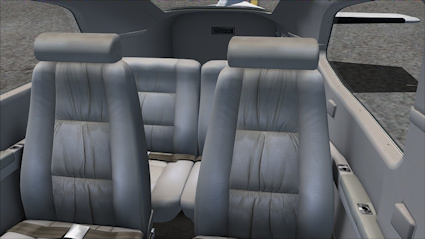
-s.jpg)
-s.jpg)

